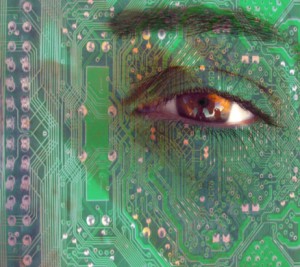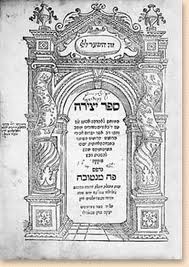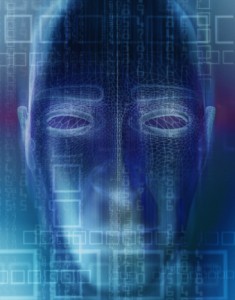All Things Digital: Part 1
By Asher Crispe: March 18, 2011: Category Inspirations, Quilt of Translations
 What are things made of? Inquiring minds want to know. Most of us, as curious children or puzzled adults, feel the need to peek beneath the surface of the world and inquire about the basic building blocks of our reality. (My son is convinced that everything is made out of Lego.) So what is it that fundamentally structures creation? Cells? Molecules? Atoms? Electrons? Quarks? Vibrating Strings?
What are things made of? Inquiring minds want to know. Most of us, as curious children or puzzled adults, feel the need to peek beneath the surface of the world and inquire about the basic building blocks of our reality. (My son is convinced that everything is made out of Lego.) So what is it that fundamentally structures creation? Cells? Molecules? Atoms? Electrons? Quarks? Vibrating Strings?
When we take the elevator all the way down to the smallest scales of the microcosmic realm, we encounter something quite unexpected. Rather than uncovering more solid stuff, we run up against an uncanny labyrinth of information. At the bottom, our universe is now recognized by science to be more like a ‘thought’ than anything else. In so much as that ‘thought’ is expressing itself—physical processes being akin to the universe talking to itself—the emerging world is comprised of this information which, as it gets more complex, forms higher order phenomena such as atoms and cells. Moreover, we can treat this information like a language which we can learn to read, write, edit and even reprogram.
Nowhere is this more evident than with a scanning tunneling microscope. While the principle job for which it was designed was to see what’s there at the atomic scale (this is no easy task inasmuch as atoms are smaller than visible light waves can detect and as a consequence the device functions by feeling its way along the surfaces of its object—seeing with touch like a blind person reading brail), it also managed another equally important feat. As the major tool of the trade, the scanning tunneling microscope is able to write as it reads. With stunning atomic precision, individual atoms may be placed into virtually any configuration one wishes.
![]() Some versions of this instrument have even been modified into freakish atomic typewriters. The landmark achievement that first demonstrated this level of matter manipulation was in 1989 when Donald M. Eigler, a physicist working for IBM, managed to spell out the letters I-B-M with 35 individual xenon atoms.
Some versions of this instrument have even been modified into freakish atomic typewriters. The landmark achievement that first demonstrated this level of matter manipulation was in 1989 when Donald M. Eigler, a physicist working for IBM, managed to spell out the letters I-B-M with 35 individual xenon atoms.
The big news is that we have always lived in a digital universe. Far from being a mere modern day invention—the handiwork of scientists fabricating with code and computers that turn everyday things into a new, dematerialized digital format—creation itself has always been about information. While science has only recently recognized this, from ancient times, the kabbalists have maintained that the nature of space, time, matter and energy boil down to the even more fundamental phenomenon of information.
Furthermore, this information is structured digitally.
One of the earliest texts of Kabbalah is Sefer Yetzirah, The Book of Formation. Tradition places this text back as far as Abraham, from whom it was passed in oral form until reportedly being redacted by the great Talmudic sage Rabbi Akiva. By all accounts this work hails from a past era that at first glance seemed to be ignorant of the information age of today. Yet, I would submit that the secrets of creation transmitted in this work make it the first text on information theory.
Jewish mystical teachings have always emphasized the notion that Divine speech engenders new realities. From the Genesis narrative, we find God saying ‘Let there be light’ and ‘there was light’. Creation through a series of speech-acts becomes the source of a multitude of reflections on the nature of language as the language of nature. For the rabbis of old, God made the universe using the Hebrew letters.
 In a more nuanced fashion, the opening of Sefer Yetzirah (1:1) contends that everything was brought into existence “with 32 mystical paths of wisdom”. Wisdom or chochmah is understood in Kabbalah to refer to the seminal insight of mind. In particular it is associated with the ‘father’ dimension of the intellect. The term ‘father’ here possesses a similar connotation to that of the Latin word pater from which derives the word “pattern”. Similarly, chochmah/wisdom may be regarded as an abstract pattern of information. Thus, the expression in Psalms (104:24): “…You made them all with wisdom…” can be given a revised translation and rendered as “you made them all with information” as the intelligibility of everything is at its heart information.
In a more nuanced fashion, the opening of Sefer Yetzirah (1:1) contends that everything was brought into existence “with 32 mystical paths of wisdom”. Wisdom or chochmah is understood in Kabbalah to refer to the seminal insight of mind. In particular it is associated with the ‘father’ dimension of the intellect. The term ‘father’ here possesses a similar connotation to that of the Latin word pater from which derives the word “pattern”. Similarly, chochmah/wisdom may be regarded as an abstract pattern of information. Thus, the expression in Psalms (104:24): “…You made them all with wisdom…” can be given a revised translation and rendered as “you made them all with information” as the intelligibility of everything is at its heart information.
Why 32? Sefer Yetzirah and its dozens of associate commentaries go on to itemize the 32 paths relating them to the 32 appearances of the name of Elokim (which refers to God enclothed within nature) in the account of creation given in the first chapter of Genesis. This suggests that natural world is primarily structured in terms of these 32 paths which will prove to be defining of the overall character of the ‘installed’ universe.
Taking it a step further, these 32 break down into two subcategories which act as the two basic modalities of language: the 22 Hebrew letters and the 10 digits from 0 to 9. As kernels of semantic meaning, the 22 Hebrew letters are analogous to the objects they form. Packaged together in proper combination, we can see how the letters give rise to various entities or phenomena in creation much like the base pairs of DNA act as letters coding for a given organism. Beyond the organic, letters also represent the building blocks of the inorganic. There is a code for every rock or mineral. Even exchanges of energy and the morphing of space-time communicate something that may be depicted as a language.
This language, according to the teachings of Sefer Yetzirah, may be further compressed and rendered digital. The 22 letters reduce to 10 numbers. At its core, all of creation is digital!
Sefer Yetzirah (1:3) even explains the digital universe in binary terms:
“…in the number of ten fingers, five opposite five, with a singular covenant precisely in the middle in the circumcision of the tongue and in the circumcision of the membrum (of the procreative organ).”
Needless to say, this is a cryptic text. Why relate the numbers 0 through 9 in this way? For starters let us consider that the word “digital” comes from “digit” which in Latin means a finger. 10 fingers gives us 10 digits. Yet these 10 are organized into two groups—a right hand and a left hand with five fingers each. This is tantamount to polarizing numbers into odd verses even types. There are only two alternatives. In kabbalistic tradition there are also masculine (odd) and feminine (even) poles. Taken differently, a binary bit being either a “one” (masculine) or a “zero” (feminine) also fits this model. This dynamic of right/left, male/female, odd/even centers on the covenant (binding or link) of circumcision of the procreative organ. As an interface object, which is marked with a sign of circumcision, the reproductive organs reflect all forms of creativity including linguistic iterations. Meaning is suspended between subject and object, male and female, speaker and listener, signifier and signified. This is the core binary relationship.
Moreover, the creative act as a covenant, a formal agreement or mediation, of that which is held in-between, also centers on the circumcision of the tongue. In Hebrew, tongue (lashon) also means “language”. While the term for circumcision (milah) can also mean a “word” or “speech”. As for the English term ‘circumcision’ which denotes the type of act i.e. ‘to cut around’, we might express this as a process of ‘outlining’. To cut around an object is to outline it. In this case, the two types of circumcision reflect the dual outline of the centrality of both language and creativity around which the digital world centers.
The many striking interrelationships between sexuality, creativity and language born out of this kabbalistic context can be seen in a myriad of ways throughout the history of thought. In pondering these relationships, veteran literary critic George Steiner (who has had some minimal contact with Kabbalah), once remarked in his classic work After Babel (39) that: “Eros and language mesh at every point. Intercourse and discourse, copula and copulation, are sub-classes of the dominate fact of communication….Sex is a profoundly semantic act.”
 In the book of Psalms (8:4) we find the expression: “When I look to the heavens, the work of Your fingers….” Here, the same term is used as in Sefer Yetzirah for fingers or digits. Consequently we might explain this verse as follows: “when I look to the heavens” whereby heavens sometimes refers in the rabbinic tradition to the abstract origin of our concrete reality or earth, and it is there, within that abstract envelope that we understand “the work of Your fingers” to mean that ‘Reality’ or God, functions digitally. Eventually we may come to realize that when we speak of God giving us ‘signs‘, that this is similar to stating that existence is built out of language. As we learn to read and write this language, we will uncover layer upon layer of the natural world as a digital enterprise.
In the book of Psalms (8:4) we find the expression: “When I look to the heavens, the work of Your fingers….” Here, the same term is used as in Sefer Yetzirah for fingers or digits. Consequently we might explain this verse as follows: “when I look to the heavens” whereby heavens sometimes refers in the rabbinic tradition to the abstract origin of our concrete reality or earth, and it is there, within that abstract envelope that we understand “the work of Your fingers” to mean that ‘Reality’ or God, functions digitally. Eventually we may come to realize that when we speak of God giving us ‘signs‘, that this is similar to stating that existence is built out of language. As we learn to read and write this language, we will uncover layer upon layer of the natural world as a digital enterprise.
http://www.interinclusion.org/inspirations/all-things-digital-part-2/
All Things Digital: Part 1,















;)
;)
;)
;)
;)
;)
;)
;)
;)
;)

When I read this it made me think about how the letter ‘Bet’ looks kind of like a two, and how the Torah and the creation story starts with the letter ‘Bet’. Two is binary, which made me think that this can imply that the information, with which G-d created the universe, is in binary (base 2), something that the Holographic theory of the universe already speculates. I was wondering if there is any parallel in Kabbalah.